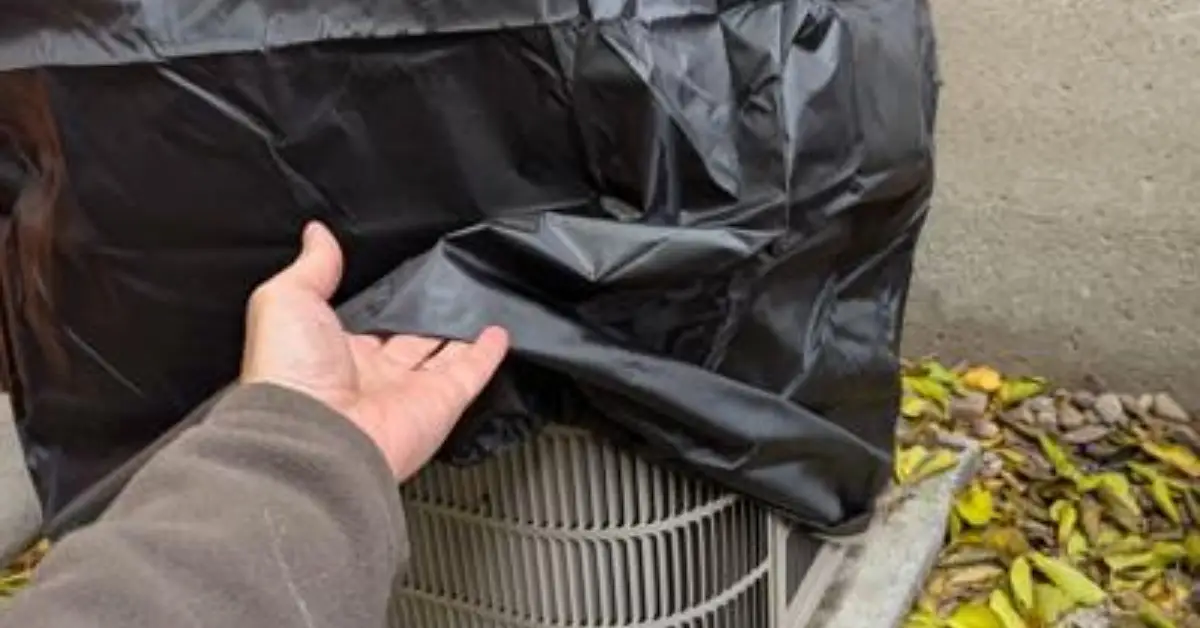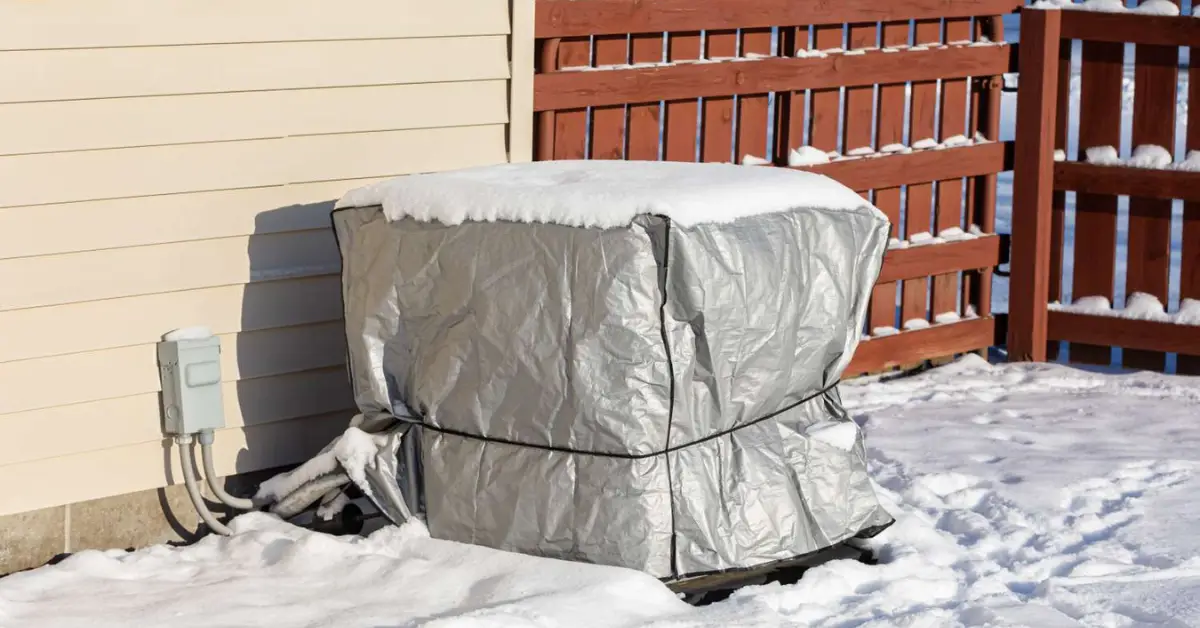Should You Cover Your Outdoor AC Unit Before the Cold Hits?
Winter is around the corner, and if you’re like me, you’ve probably paused in your driveway wondering whether your AC unit needs a cover. I’ve read plenty of advice online—some say wrapping it up is essential to protect it from snow and debris, while others insist that covering it can actually cause damage. It’s easy to get confused when every article seems to give a different answer. Over the years, talking to HVAC professionals, reading manufacturer guidelines, and checking in with fellow homeowners, I’ve learned that there isn’t a one-size-fits-all answer. How you care for your AC depends on your climate, the type of unit you have, and even the materials you use to protect it.
That’s why in this guide, I want to give you a clear, practical approach. I’ll walk you through the risks of covering your AC, when it might actually help, and what alternatives exist that keep your system safe without creating problems like moisture buildup or rust. By the end, you’ll know exactly what steps to take this winter to keep your AC healthy, efficient, and ready for next summer—without guessing or stressing over conflicting advice.
Quick Answer: Covering Your AC in Winter
If you want a straight answer right off the bat—most of the time, you don’t need to cover your AC unit in winter. I know that sounds counterintuitive, especially when you see snow and leaves piling up around your unit. But after talking to HVAC experts and checking manufacturer advice, covering it can actually do more harm than good if it’s not done carefully.
Here’s the key takeaway:
- Covering is usually not recommended – Most units are designed to withstand cold weather without wrapping.
- Ventilation matters – A tightly sealed cover traps moisture, which can lead to rust or mold.
- Optional protection exists – If you live in an area with heavy debris, snow, or ice, a breathable AC cover or a top-only shield can help.
- Material matters – Avoid plastic tarps that hold water; use a cover specifically designed for AC units.
If you’re curious about how manufacturers view this, Lennox provides clear guidance on why covering can be risky.
Who Needs to Worry About AC Covers

Not everyone needs to stress about this. You can save yourself a lot of time by figuring out whether your setup actually requires extra protection. I usually tell homeowners to think about their location, climate, and the type of unit they have.
Here’s a quick breakdown:
- Cold climates – If temperatures regularly dip below freezing and your area gets heavy snow, a protective top cover might help.
- Regions with falling debris – Areas with lots of leaves, pine needles, or dust might benefit from a shield that keeps the top clear.
- Commercial vs residential units – Bigger commercial units are usually more robust and don’t need DIY covers, whereas smaller residential units might need light protection in extreme weather. If you’re curious about your unit type and want to make informed winter maintenance decisions, it helps to know the different types of air conditioners that actually beat the heat of your home.
By figuring out which category you fall into, you can avoid unnecessary work and prevent accidentally harming your unit.
Why Experts Advise Against Covering AC Units
Here’s where the “cover or don’t cover” debate gets interesting. Most HVAC pros and manufacturer guides warn that covering can introduce risks that outweigh the benefits. From my own experience inspecting units, I’ve seen homeowners unintentionally trap water under plastic covers or leave debris inside, creating bigger problems than winter weather ever would.
The main risks include:
- Moisture buildup – Water from snow or condensation can sit under a plastic cover, accelerating rust and corrosion.
- Mold growth – Trapped moisture creates the perfect environment for mold, which can affect both your AC and the air quality in your home.
- Insect and rodent nesting – Covers can make a cozy home for pests during winter.
- Rust and corrosion – When water accumulates against metal parts, it speeds up wear and shortens the unit’s life.
It’s why even top-rated sources like West Michigan Heating recommend leaving the sides open and only using breathable protection if needed. I’ve found that small tweaks—like clearing debris and installing a top shield—give protection without the risks of full coverage.
When Covering Might Be Beneficial

Even though I usually advise against covering your AC, there are some situations where a little protection can actually help. I like to think of it as “smart coverage”—not wrapping everything in plastic, but taking targeted measures where winter conditions are extreme.
Cases where covering can make sense:
- Heavy snowfall – If snow accumulates to several feet, a breathable top cover or shield can prevent ice damage on the fan and grille.
- Leaf or debris accumulation – Homes near tall trees can benefit from a lightweight top cover to keep leaves and twigs out.
- Damaged or older units – Older ACs with exposed components may need extra protection, but only if the cover allows airflow.
How to cover safely:
- Use a breathable AC cover designed for winter. Avoid plastic tarps that trap water.
- Cover only the top of the unit, leaving the sides open for ventilation.
- Check periodically for moisture or debris under the cover to prevent mold or rust.
For more detailed guidance on protective AC coverings and winter preparation, this guide from The Spruce explains exactly what to do and what to avoid,
Step-by-Step Winter AC Maintenance
I always tell homeowners that protecting your AC isn’t just about covers—maintenance is just as important. Taking a few simple steps before the cold hits can save you money and headaches in the spring.
Here’s my step-by-step approach:
- Clean and inspect the unit – Remove leaves, dirt, and any buildup on the coils or fins. Check for obvious damage or rust.
- Remove debris and ensure drainage – Make sure water can drain freely; trapped water is a bigger risk than snow. While you’re checking your unit for debris and preparing it for winter, be aware of common household items that can harm your AC and learn what to keep away from your unit.
- Optional protective skirt or shield – A commercially available winter skirt can block snow from the top while keeping sides open.
Doing these steps carefully ensures your AC survives winter without needing full coverage. It’s practical, fast, and keeps your unit healthy for years.
Alternative Protection Methods Without Covering
If you want to protect your AC without risking rust or mold, there are smarter options than wrapping it in plastic. I personally recommend thinking about structural or passive solutions.
- Install a protective roof or shield – A small slanted roof over your unit can block snow, ice, and falling debris without sealing in moisture.
- Elevate the unit or use debris guards – Raising the unit slightly off the ground or installing side guards keeps water, leaves, and small critters away while preserving airflow.
These methods reduce winter risks without the pitfalls of a full cover. You’ll sleep easier knowing your AC is safe, dry, and ready for spring.
Common Myths About Winter AC Care

It surprises me how many homeowners follow advice that isn’t accurate. Let’s clear up some of the most common myths I encounter:
- Myth 1: Covering prevents all winter damage – In reality, it can trap moisture and accelerate rust.
- Myth 2: AC units should be shut down entirely – Most units are designed to withstand cold; only turn them off if your system requires seasonal shutdown.
- Myth 3: Plastic covers are best – Heavy plastic can hold water; breathable or top-only options are safer.
I’ve seen these myths spread on social media and even in some blogs, so it’s important to separate fact from fiction.
Seasonal Checklist for AC Longevity
Here’s my go-to winter prep checklist—it’s simple, but it can save hundreds in repairs:
- Winter prep checklist: Clean debris, inspect fins and coils, optionally install a breathable skirt or top shield. While winter is the perfect time to protect your AC, it’s also a great opportunity to make sure your home stays bright and inviting—check out these 5 simple hacks to instantly brighten your home with natural light.
- Post-winter startup checklist: Remove any covers, check for rust or blockages, test system function, and schedule maintenance if needed.
Following these steps ensures your AC survives winter and performs efficiently come summer.
When to Call a Professional
Sometimes DIY only goes so far. I always recommend calling a professional if you notice anything unusual.
- Signs your AC needs inspection: Strange noises, ice buildup, uneven airflow, or visible rust.
- Recommended maintenance schedule: Annual professional inspection, preferably in fall before the first freeze, and a check in spring.
This approach prevents small problems from turning into costly repairs and keeps your warranty intact.
Next Steps
Now that you know what works—and what doesn’t—I’d love to hear from you. Have you tried covering your AC before, or do you use alternative protection methods? Comment below and share your experience.
Visit Build Like New for more Home Improvement Tips. It walks you through everything I’ve mentioned here, so you can protect your AC without guesswork. Don’t wait for winter to sneak up—take action today and keep your unit running smoothly all season long.
Disclaimer: The information in this article is for general guidance on AC maintenance and winter protection. Always follow your manufacturer’s instructions and consult a licensed HVAC professional for specific issues. Build Like New is not responsible for any damage or injury resulting from DIY repairs or improper use of covers.


